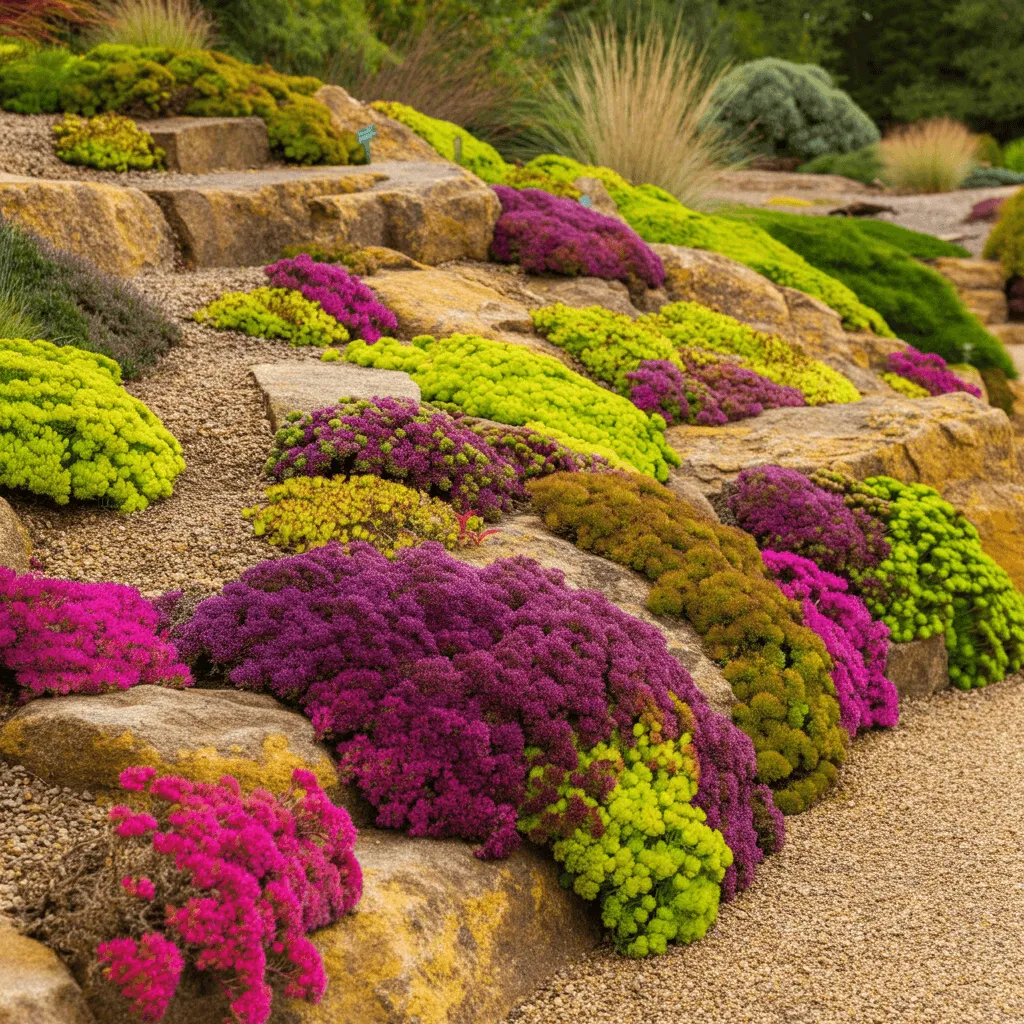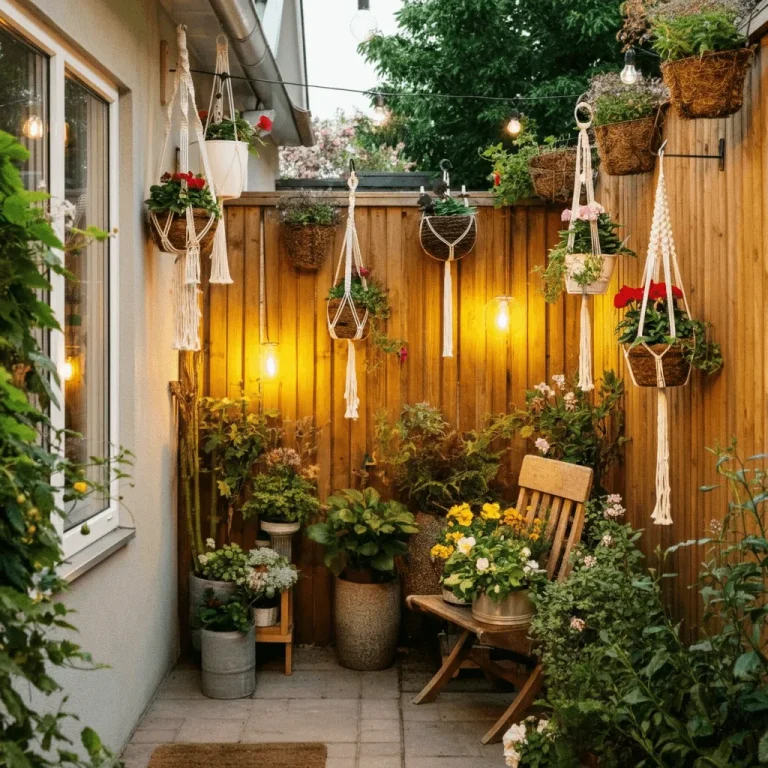10 Stunning No-Mow Lawn Ideas with Ground Covers
Who says you have to spend every Saturday morning mowing and sweating under the sun to maintain a lush lawn? Time is precious—and grass shouldn’t get all of it! Whether you’re looking to save time, conserve water, or introduce eco-friendly alternatives to your yard, these no-mow lawn ideas have got you covered. Bonus? You’ll enjoy a beautiful, hassle-free yard that your neighbors might just envy. Sit back, relax, and get ready to say goodbye to the mower—your weekends will thank you!
1. Clover Lawns as a Low-Maintenance Favorite
If your yard could talk, switching to clover just might make it thank you. Clover lawns are not only lush and soft, but they also stay greener longer than traditional grass. White clover specifically repels pests and adds nitrogen to the soil, reducing the need for chemical fertilizers. Pro tip? Micro clover is perfect for smaller spaces and blends seamlessly with other ground covers.
Imagine your kids and pets running barefoot through clover this is a yard option that feels as good as it looks. Not to mention, clover thrives with minimal care, making it your best friend if your thumb isn’t quite green.

2. Creeping Thyme for a Fragrant Touch
What’s better than a ground cover that looks good? One that smells good, too! Creeping thyme offers tiny blooms in shades of purple, pink, or white, creating a carpet of color during the warmer months. It’s drought-tolerant, resilient underfoot, and surprisingly practical—it welcomes pollinators while giving you a lawn that asks for little attention.
If you’ve got walkways or stepping stones in your yard, creeping thyme can grow around them beautifully, adding a sweet aroma every time someone takes a step.

3. Sedum for a Vibrant, Rock-Friendly Look
If you think succulents are just for planters, sedum is here to prove otherwise. This drought-tolerant perennial requires barely any water and thrives even in poor soil. Better still, it comes in various colors—from greens to purples—making it a perfect way to inject some vibrancy into your yard.
Sedum is especially valuable if your lawn has rocky or sloped areas. It spreads easily and grows in places where grass might struggle, creating a mosaic of color that lights up your outdoor space.

4. Moss for Shady, Enchanted Spots
Have a shady lawn area where grass struggles? Try moss! Its velvety texture and rich green hue create the perfect fairy-tale vibe for shaded yards or under mature trees. Moss requires no mowing, fertilizers, or pesticides. What it does need is some shade, a humid climate, and slightly acidic soil.
Case in point—gardens in the Pacific Northwest are often made more magical with mossy earth covering. Plus, it’s soft enough that even the family dog won’t mind lounging on it!

5. Low-Growing Perennials for a Pop of Color
Who says only flowers belong in a garden bed? Low-growing perennials like creeping phlox or ajuga spread quickly, require little maintenance, and bloom into vibrant hues that create living art in your yard. Unlike grass, they welcome fullness and thrive when allowed to flourish naturally.
Plant them strategically for bold, colorful borders, or choose varieties that bloom at different times to ensure year-round charm.

6. Artificial Turf for Effortless Green
Now, here’s an option for those who appreciate perfection with zero effort. Artificial turf might not be alive, but it offers year-round greenery without the headache of mowing, watering, or fertilizing. Today’s turf is far from the cheap, plastic-like surfaces of the past—modern options mimic grass so closely, it’s hard to tell the difference.
This is a particularly smart choice for families who want a functional play surface for kids or pets but could do without the hassle of weekly maintenance.

7. Dichondra for a Low-Profile Alternative
Fans of clean, minimalist designs will love dichondra, an eye-catching ground cover featuring rounded, coin-like leaves. This fast-growing beauty forms a dense, vibrant mat that’s perfect for urban yards or areas with minimal space.
Beyond its visual appeal, dichondra handles foot traffic moderately well and thrives in warm, sunny climates. If you live in the Southern United States, this could be the no-mow solution you didn’t know you needed.

8. Wildflower Meadows to Attract Pollinators
Ditch grass entirely and transform part of your lawn into a wildflower meadow. It’s as low-maintenance as it gets and brings a lively vibe to your yard with colorful blooms and thriving pollinators. Bees, butterflies, and birds will flock to your space, creating an eco-friendly haven.
Many homeowners find success using wildflower seed mixes for their area. A quick sprinkle, some watering in the beginning, and you’ll have a unique lawn alternative that grows more stunning each season.

9. Gravel Gardens for a Modern, Sculptural Landscape
You don’t even need plants to create a stylish no-mow yard. Gravel gardens with drought-tolerant plants or succulents can transform a lawn into a contemporary retreat. Gravel comes in various colors and textures, allowing endless creative possibilities when designing your outdoor space.
Add design elements like large boulders, potted cacti, or woven paths, and you’ll have a yard so chic that people will think it belongs in a magazine.

10. Ground Cover Mixes for Varied Textures
Who says you have to stick with just one ground cover? A mix of plants, such as violets, creeping jenny, and strawberries, can provide a unique mosaic appearance, blending colors and textures seamlessly. Ground cover mixes give your yard visual interest and often encourage biodiversity.
This kind of setup is perfect for natural, woodland-style landscaping or areas where you want to create a softer touch without uniformity.

FAQs About No-Mow Lawns
Q1. Why should I consider a no-mow lawn?
A no-mow lawn saves time, reduces water usage, and is often better for the environment. It’s also a creative way to break away from traditional lawns and design a more functional, beautiful space.
Q2. What is the best no-mow ground cover?
The best ground cover depends on your soil, light conditions, and preferences. Clover, creeping thyme, and moss are popular choices for different climates and yard needs.
Q3. How much do no-mow lawns cost?
Costs vary based on your chosen ground cover. Native plants and wildflowers can be more affordable, while artificial turf or ornamental gravel gardens can be pricier upfront but save money long-term.
Q4. Are no-mow lawns good for pets?
Yes! Options like clover, moss, and creeping thyme offer soft surfaces for pets. Just avoid plants toxic to animals and provide open spaces for them to roam.
Q5. Do no-mow lawns require watering?
Most no-mow ground covers, like thyme and sedum, are drought-tolerant and require minimal water once established. Still, some, like moss, thrive in damper conditions.
—
Creating a no-mow lawn doesn’t just save you from a tedious chore—it opens the door to stunning, eco-friendly, and creative landscaping options. From fragrant thyme to vibrant sedum, your dream yard doesn’t need grass to look gorgeous. Try one of these solutions, and you may wonder why you didn’t retire your lawn mower years ago!







